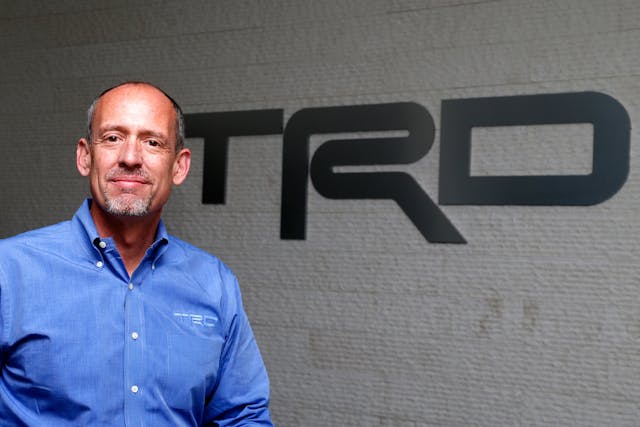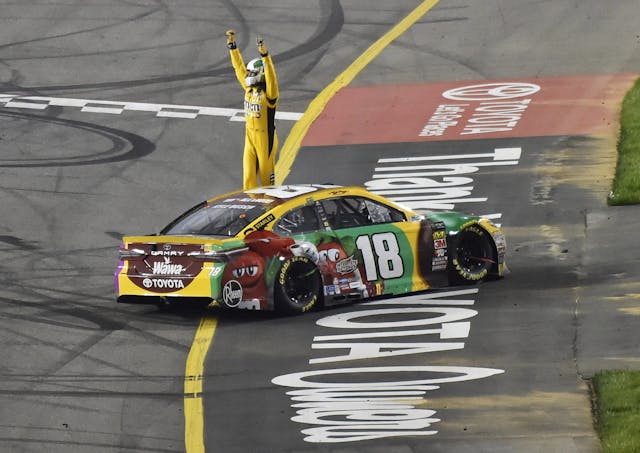How NASCAR gears up to race under corona
After a long coronavirus break, NASCAR is once again preparing to go racing. In preparation, team and manufacturer facilities in North Carolina have reopened. There is, however, more involved than simply turning on the lights and heading back to a green flag.
We checked in with David Wilson, the president of Toyota Racing Development, to see how the company is preparing for the restart. He says Toyota’s TRD facility in Salisbury, North Carolina, has been preparing for this change, and that TRD staff have held multiple meetings over the past week to review new procedures. Most Salisbury employees will continue to work from home for some time, Wilson says, but ten people—roughly 20 percent of facility staff—returned to the office this week. Those employees start their work mornings at home, with a health questionnaire intended to verify lack of coronavirus symptoms. Once they arrive in the office, they’re met with regular temperature checks as well as additional sanitation and social-distancing practices.
One of the most important parts of Salisbury’s shop is the on-site “driver-in-the-loop” (DIL) simulator. Race cars hinge on the nuances of setup, but because stock cars are so similar to begin with, their chassis adjustment is particularly critical. NASCAR manufacturers use DIL sims to replicate car behavior at speed with a human driver at the wheel. Because the series has eliminated practice sessions and almost entirely eliminated qualifying sessions for its next few races over safety concerns, teams will have to shoot for an optimal setup on the first try, the clock running. This will make sim use—banned in the series since racing was halted in March, but once again legal—more important than ever.

As in the past, Salisbury’s DIL sim will be used by Toyota teams to test prospective setup changes and engineer their cars, but also to help drivers get practice on upcoming tracks and shake off the rust from weeks spent at home. As you might expect, multiple Toyota Cup series drivers have volunteered for these sessions in order to get back in the habit of being in a race car. Wilson says that although most TRD drivers have been using at-home simulator rigs and software like iRacing, a NASCAR-level DIL sim is much closer to what happens in the actual race cars—it runs on the same data, and offers similar motions. Still, even simulated driving has to adapt to health concerns. In the past, the Salisbury sim has typically run for 12 hours at a time, but it now offers shorter run times, and personnel no longer overlap on the clock. Each session is separated by required breaks to allow for social distancing and ensure that proper cleaning can take place.
The Cup calendar for this year has also seen changes. Darlington and Charlotte were chosen for the first four Cup races—May 17, 20, 24, and 27, respectively—because the types of cars that work at those tracks are similar to the cars that teams prepared, but did not run, for the series’ cancelled Atlanta and Homestead races. As such, shop prep before a race should be minimized and require reduced personnel.
Next, there is the matter of engines. Unlike its competitors, Toyota does not build its NASCAR V-8s in North Carolina, assembling them instead at the company’s facility in Costa Mesa, California. This poses a unique challenge, as a statewide stay-at-home order means TRD is not yet allowed to operate in California.
According to Wilson, the company is prepared with engines for the next few races, and it has multiple contingency plans in place for future engine builds. Most Toyota Cup teams now have engines installed in two cars, with another two to three engines on-site in preparation. This should allow them to run the initial batch of Darlington and Charlotte races without issue. TRD is also prepared to reuse some of those engines if necessary, in a so-called “brake-clean rebuild,” a procedure that involves cleaning up an engine and installing new valve springs, and that can be done on site at each team’s shop. These types of rebuilds are contingent on race distances, one of the reasons why Toyota was onboard with NASCAR’s removal of practice sessions and shortened events. In addition to improving safety by reducing the number of people required at each track, the shorter race distances should allow manufacturers to reuse engines for a greater number of races. Wilson states that this “speaks to how well-thought-out every part of [NASCAR’s] plan has been.”

With all that in mind, TRD believes that most of its teams will be able to get through the next batch of races without issue, and for the meantime, management is closely watching California. Toyota’s Costa Mesa facility has been effectively closed for all engine work, rededicated to COVID-19 relief efforts, since the state’s stay-at-home order went into place. Around half of the employees at the Costa Mesa facility are able to work remotely and have been doing so, but the other half perform hands-on jobs like machining and engine-building, and they need access to the facility in order to resume work. Wilson says that Toyota will not “let California prevent [the Costa Mesa shop] from fulfilling obligations to their partners,” and that if the facility is unable to reopen in a timely manner, TRD will likely look to establish engine efforts in North Carolina. One of Toyota’s competitors, Wilson says, has already reached out to offer shop space in case it’s needed.
Finally, the paddocks at upcoming Cup races will look much different, primarily because support staff will be greatly reduced. TRD will only have a handful of people on site at each race, and those present will mostly be related to engine tuning. Cup races typically feature one TRD engine tuner per car, but the first few races will involve only a handful of those tuners on site, one for every two cars. Since the races will not have practice sessions, TRD does not anticipate needing to make any mid-race changes, like installing new valve springs. Which means the tuners will be there primarily to warm up and monitor engines before the cars head to NASCAR for technical inspection.
Wilson is optimistic about the current timeline, and he believes that Toyota is well prepared to support its teams as racing resumes. He also noted how much work has been put in by everyone involved, from the teams, to NASCAR, to their competitors, working the variables so that the series can see a successful return to racing while keeping safety in mind.
“We are grateful,” he said, “that NASCAR has been so sensitive” to the situation.


